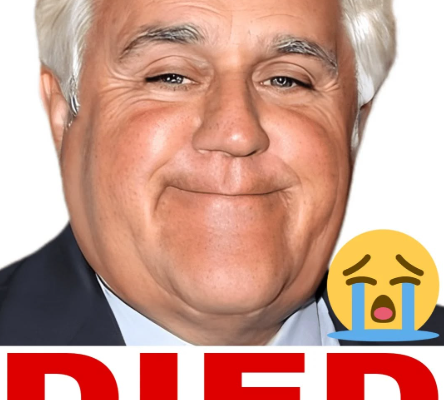Jay Leno at 74: Mortality, Machines, and the Legacy of a Life in Motion
Jay Leno has always been a man in motion. Whether behind the wheel of a rare Bugatti or delivering punchlines on late-night television, he’s spent his life accelerating through culture, comedy, and craftsmanship. But now, at 74, the former “Tonight Show” host is slowing down—not in spirit, but in preparation. In a candid acknowledgment of his own mortality, Leno has begun planning for the inevitable, and in true Leno fashion, he’s doing it with a twist: leaving a substantial portion of his estate to his cars.
“No one lives forever,” he said recently, a simple phrase that carries the weight of decades lived in the public eye, and in the private sanctuary of his garage. For Leno, cars aren’t just possessions—they’re companions, artifacts, and reflections of his identity. And as he prepares for the end of his journey, he’s making sure they’ll continue to tell his story long after he’s gone.
A Life Built on Wheels and Wit
Jay Leno’s rise to fame is well documented. From stand-up stages to the helm of “The Tonight Show,” he became a household name through humor, humility, and an unmistakable voice. But behind the scenes, another passion was quietly revving: his love for automobiles.
Over the years, Leno amassed one of the most impressive private car collections in the world—over 180 vehicles and 160 motorcycles, valued at more than $52 million. His garage became a shrine to engineering, history, and design, and eventually a platform for his second act: “Jay Leno’s Garage,” a web series and later a TV show that attracted millions of viewers and fellow enthusiasts.
Facing Mortality with Grace
In recent years, Leno has faced serious health challenges. In late 2022, he suffered severe burns in a garage fire, followed by a motorcycle accident that left him with multiple injuries. These incidents, coupled with his wife Mavis’s declining health due to dementia, have prompted Leno to take stock of his life and legacy.
A Los Angeles judge recently granted Leno conservatorship over Mavis’s inheritance, citing her diminished mental capacity and need for care. Through it all, Leno has remained devoted, caring for her with what friends describe as “unwavering devotion.” But the experience has clearly shifted his perspective. Mortality is no longer abstract—it’s personal, pressing, and real.
The Cars as Legacy
Rather than simply passing his collection to family or selling it off, Leno has chosen a more symbolic route. He plans to donate the bulk of his car collection to a museum through the JDM Foundation, his nonprofit organization. This decision reflects not just his love for cars, but his desire to preserve their stories and share them with future generations.
Each vehicle in Leno’s garage has a tale—some are rare prototypes, others are restored classics, and many have been featured in his shows. By placing them in a museum, Leno ensures that these machines will continue to educate, inspire, and entertain long after he’s gone. It’s a legacy built not on fame, but on fascination.
A Personal Touch
Leno’s estate plan also includes $7 million earmarked for his nephew and Mavis’s brother, a gesture that reflects his commitment to family and care. But it’s the cars that dominate the narrative, and for good reason. They’ve been his sanctuary, his stage, and his source of joy.
In interviews, Leno has often described cars as “rolling pieces of art” and “time machines” that connect us to different eras and ideas. His decision to leave them to a museum isn’t just practical—it’s poetic. It’s a way of saying, “This is who I was. Let these machines speak for me.”
Humor in the Face of the Inevitable
Even as he plans for death, Leno hasn’t lost his trademark humor. “No one lives forever,” he quipped, a line that’s both sobering and sly. It’s the kind of phrase that could end a monologue or begin a eulogy. And in Leno’s case, it does both.
His approach to mortality is refreshingly honest. There’s no melodrama, no denial—just a clear-eyed recognition that life is finite, and that legacy is what we leave behind. For Leno, that legacy is built on laughter, loyalty, and a lot of horsepower.
Cultural Impact and Reflection
Leno’s decision to prioritize his car collection in his estate planning speaks to a broader cultural shift. In an age where celebrity estates often become battlegrounds, Leno’s clarity and intentionality stand out. He’s not just preserving wealth—he’s preserving meaning.
His story also invites reflection on how we define value. For Leno, value isn’t just monetary—it’s emotional, historical, and communal. His cars aren’t just assets; they’re artifacts. And by donating them, he’s turning private passion into public good.
The Road Ahead
Though Leno is stepping back from the spotlight, he’s not disappearing. He continues to make occasional appearances, share stories, and engage with fans. But his focus has shifted—from performance to preservation, from entertainment to endowment.
His garage, once a personal retreat, is becoming a public treasure. And in doing so, Leno is redefining what it means to leave a legacy. It’s not about grandeur—it’s about generosity. Not about fame—but about fascination.
Conclusion: A Life Well Driven
Jay Leno’s journey has been anything but ordinary. From comedy clubs to car clubs, he’s built a life fueled by curiosity, craftsmanship, and connection. Now, as he prepares for the final stretch, he’s doing so with grace, humor, and heart.
By leaving a chunk of his fortune to his cars, Leno isn’t just making a statement—he’s telling a story. A story about passion, preservation, and the power of machines to move us, literally and metaphorically. And as he said himself, “No one lives forever.” But with this gesture, Jay Leno’s legacy surely will.


